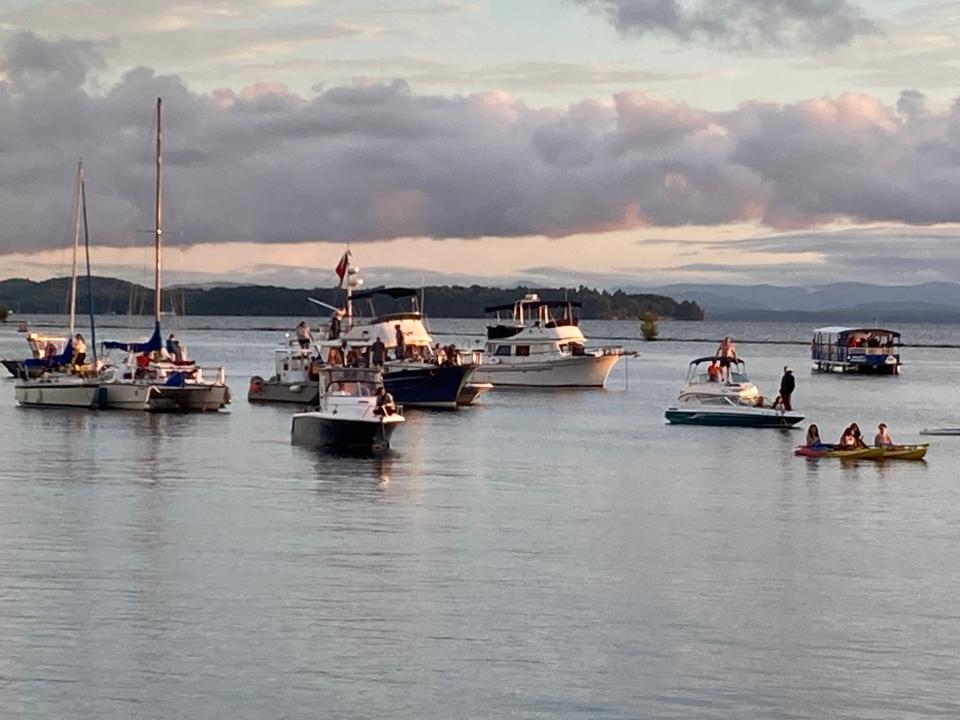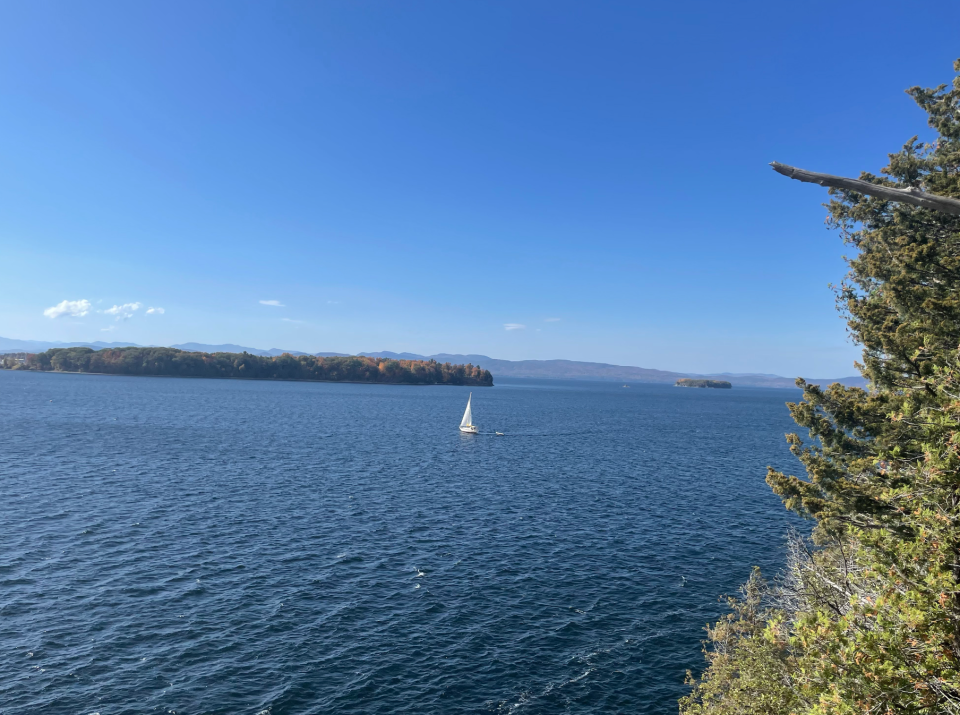Be prepared for safe boating on Lake Champlain during the solar eclipse - what to know
As people are planning the best viewing spots for the upcoming total solar eclipse, many visitors and residents plan on hitting the open water. Whether that be on a personal watercraft, a boat cruise or kicking back on the shore, there are safety precautions to be taken.
A warm day in spring can be deceitful, especially for those unfamiliar with the dubious weather of Vermont. Warm air and blue skies in early April can make the chilly water look inviting.
However, the past week Lake Champlain recorded about 38 degrees, far below a safe swimming temperature. It won't warm up much in the next few weeks, so don't plan on taking a plunge during the eclipse or risk a case of hypothermia.
Challenging weather, along with the amount of water and street traffic, means that people need to be vigilant to keep themselves and others safe. While emergency service crews and law enforcement will be operating at full capacity April 8, being proactive with water safety is essential.

Boating safety tips to know
Boating safety education is required for any motorboat operator - 12 years of age or older - born after January 1, 1974. To receive a boating license, an eight-hour boating course and subsequent test is required. Courses can be found here.
For those visiting out of state, a National Association of State Boating Law Administrators approved course as well as any NASBLA approved boating safety course is accepted by Vermont.
The Vermont Department of Public Safety provides a list of safety reminders for operating personal watercrafts.
Know your boating and swimming ability. Water conditions can change quickly and at times without notice, so it’s important to ensure you’re not getting into a situation where you’ll go beyond your abilities as a swimmer or boater.
Personal flotation devices are vital. You should have a personal flotation device for everyone aboard your boat — and anyone under 12 must wear the PFD at all times. Ensure the devices are in good shape before you leave shore. Make sure they fit, and that people on your boat know how to use them.
Alcohol and boating don't mix. It's illegal to operate a boat while under the influence. According to the Lake Champlain Committee, as many as 80 percent of all boating accidents involve alcohol. Impairment can affect your ability to swim as well.
Take a boating safety course. As mentioned above, in Vermont, they're required for everyone born after January 1, 1974.
Know the proper procedures and requirements for making a distress call, the right-of-way rules on the water and the types of lights your boat must have.
File a "float plan" - a copy of your anticipated itinerary - with a friend or family member on land, and keep that person updated on any changes on your journey.
Check the weather forecast before you go. Knowing what you will do in case of sudden inclement weather is important, especially on the gusty Lake Champlain. Warm, sunny days are ideal for boating, but you can’t always predict when a storm will roll in. Varying gusts of wind and choppy water are signs of an approaching storm.
Also keep in mind the volume of traffic that will likely hit the water April 8, and be courteous and cautious of fellow boaters. While the eclipse may be happening above your head, drivers need to be alert.
Protecting Vermont's ecology
While keeping yourself and those around you safe, the safety of Vermont's ecology and extensive biodiversity is also important.
Sandwiched between the Adirondack Mountains of New York and the Green Mountains of Vermont, the Lake Champlain basin is home to more than 600,000 people and welcomes itself to millions of tourists annually.
Lake Champlain is home to many rare and endangered species of plants and animals, including 318 species of birds in Vermont that live on, near, or depend on the lake, and over 90 species of fish.

When moving a personal watercraft between bodies of water, a multitude of plant or animal species can stick to the bottom of the craft. If that species isn't native to the new body of water, it can potentially spread and cause a variety of issues for the local wildlife. Common invasive species found on boats include Eurasian watermilfoil and curly-leaf pondweed.
Meg Modley, the healthy ecosystems & AIS management coordinator for the Lake Champlain Basin Program, works year-round to prevent the spread of invasive species in Lake Champlain.
From Memorial Day to mid-October, she staffs Vermont and New York boat launches with stewards who will inspect and take samples from boats coming and going. Many launches also provide a hosing service.
While Modley won't have any stewards on the lake April 8, she hopes that people will take preventative measures to protect this natural resource.
"If folks are bringing other watercraft or equipment and intending to launch into Lake Champlain, no matter what time of the year, please do your due diligence to clean, drain and dry your equipment before it enters the lake," Modley said.
"I would also caution that our systems are going to be stressed," Modley said. "With so many people here, we're already going to have a lot going on. So thinking about how to mitigate your activities and any kind of accidents is really important."
Sydney P. Hakes is the Burlington city reporter. Contact her at SHakes@gannett.com.
This article originally appeared on Burlington Free Press: Lake Champlain braces for boat traffic during eclipse. How to be safe

